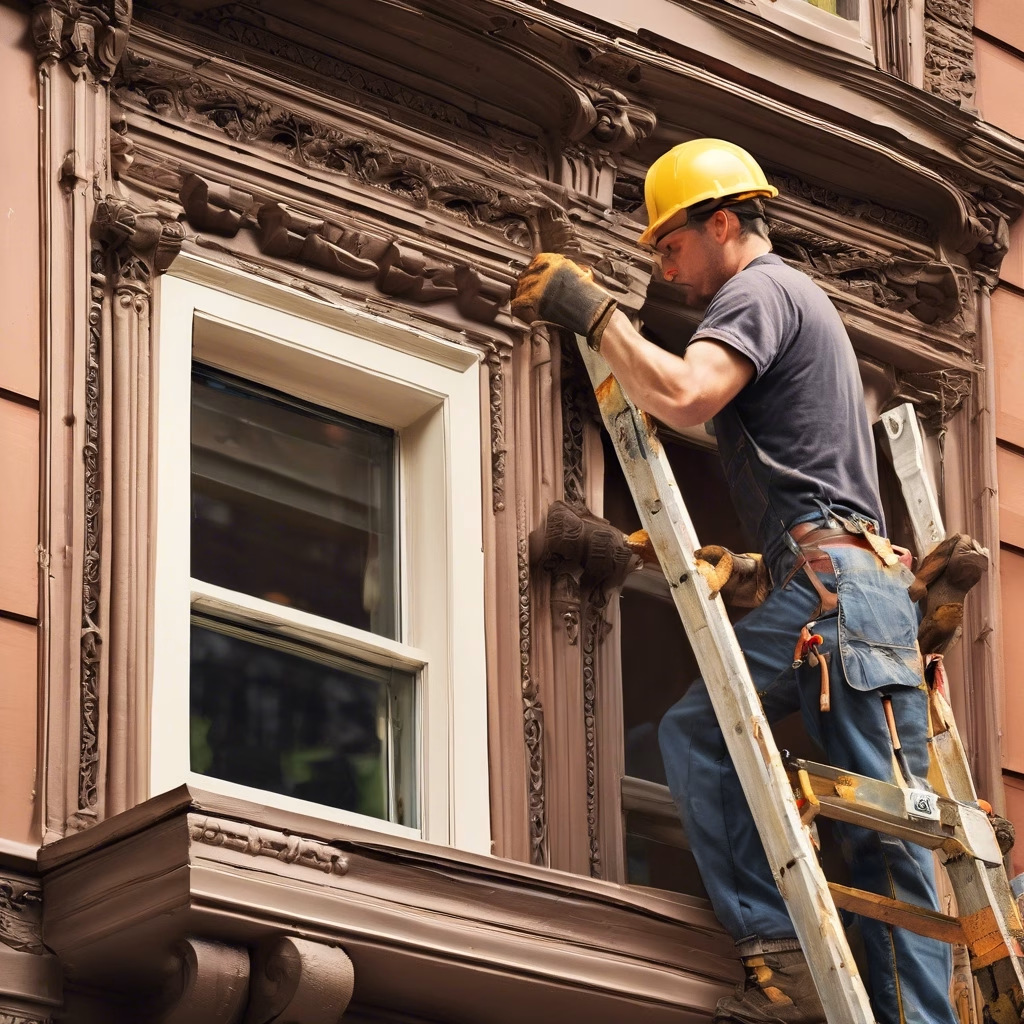Brownstone Facade Restoration
IN Architecture, Construction
Investor Name:
Jason Mark
Published Date:
July 3, 2015
Location:
Park Slope, Brooklyn,NY
Value:
$86,750
Architecture:
About Project
Project Plan: Historic Brownstone Facade Restoration
Location: Park Slope, Brooklyn, NY
Project Goal
To restore the historical and structural integrity of the Brownstone facade, addressing deterioration, water infiltration, and material failure, while strictly adhering to the standards set by the New York City Landmarks Preservation Commission (LPC) and the Department of Buildings (DOB).
Phase 1: Assessment, Permits, and Approvals (Regulatory Compliance)
1. Initial Inspection and Assessment
- Detailed Survey: Conduct a hands-on examination of 100% of the facade surface (stone and mortar joints).
- Identify Failures: Log and map specific areas of deterioration, including:
- Cracking, flaking, or spalling (surface exfoliation) of the brownstone.
- Deterioration or looseness of existing mortar joints.
- Rusting or failure of window and door lintels (steel or stone supports above openings), which often causes cracking in the surrounding masonry.
- Areas of efflorescence (white mineral deposits) indicating persistent water infiltration.
- Root Cause Analysis: Determine the source of moisture causing damage (e.g., roof issues, drainage, faulty window caulking, or incompatible previous repairs).
2. Regulatory Submissions (LPC and DOB)
- LPC Approval (Mandatory): As Park Slope is largely a Historic District, a permit must be obtained from the LPC before exterior work begins. The application must include:
- Detailed architectural drawings and elevations of existing and proposed work.
- Written specifications for the repair methods and materials to be used (e.g., specific mortar mix, patching compound).
- Documentation of the building’s historic condition (e.g., historic photographs, context photos).
- DOB Permits: Obtain all necessary permits for scaffolding/sidewalk sheds, structural work (e.g., lintel replacement), and full facade restoration.
Phase 2: Scope of Work and Technical Specifications
3. Mortar Joint Preparation and Repointing
- Removal: Carefully remove all deteriorated, loose, or incompatible (hard Portland cement) mortar from the joints to a consistent depth (typically 2-2.5 times the joint width) without damaging the surrounding stone.
- Mortar Specification (CRITICAL): Repointing must be performed using a soft, breathable, lime-based mortar (typically a Type N or custom mix) to ensure it is weaker and more permeable than the historic brownstone itself.
- Prohibited: High-strength Portland cement mortars, which trap moisture and lead to rapid stone spalling.
- Color Matching: The new mortar must be carefully color-matched to the original surviving mortar joints in texture and color.
4. Brownstone Repair and Restoration
- Principle: Repair is preferred over replacement (Standard 6, National Park Service Guidelines).
- Stone Prep: Cut back all deteriorated, loose brownstone to a sound, solid substrate. The surface must be roughened to provide a mechanical key for the patching material.
- Stone Repair Method (Composite Patching):
- Apply a custom-blended, cementitious, breathable patching compound (composite repair) in layers.
- The patch must replicate the color, texture, and original profile of the brownstone being repaired (e.g., window hoods, decorative details).
- For large repairs, non-corrosive stainless steel or fiberglass armatures may be embedded for support.
- Full Resurfacing (If Deterioration is Extreme): If the majority of the facade is too damaged for patching, a multi-coat tinted stucco system may be used, which involves:
- Applying a slurry coat (bonding agent).
- Applying scratch coats to build up the original profile.
- Applying a final finish coat with dry pigments and crushed stone to mimic the original brownstone color and texture, scored to resemble the original block layout.
5. Lintel and Structural Remediation
- Inspection and Replacement: Inspect all ferrous metal lintels (supports above windows) for rust and deflection.
- If rusted, remove rust, apply a rust-inhibitive coating, and/or replace with new, properly coated steel lintels.
- Ensure the new lintels are properly flashed to divert water away from the wall cavity.
6. Cleaning and Waterproofing
- Cleaning: Perform a gentle cleaning using a low-pressure water wash and non-ionic detergents only. Avoid abrasive methods (sandblasting, harsh chemicals) that permanently damage the historic stone surface.
- Waterproofing: Apply appropriate sealants and/or restoration coatings to non-historic surfaces (e.g., cornices, window sills) where necessary to prevent water intrusion, while ensuring the entire wall system remains breathable.
Phase 3: Project Execution and Closeout
| Milestone | Deliverable | Notes |
|---|---|---|
| M1 | Site Mobilization & Scaffold Erection | Establish safe access, install sidewalk shed/scaffolding (DOB compliance). |
| M2 | Mortar Removal & Prep | Complete removal of all old mortar in designated areas. |
| M3 | Structural Repairs | Complete lintel repairs/replacement, and stabilization of any loose stone elements. |
| M4 | Stone Restoration | Application and curing of all brownstone composite patches and resurfacing coats. |
| M5 | Repointing | Application and curing of the historic lime-based mortar in all joints. |
| M6 | Final Cleaning & Sealing | Facade washing, final detailing, and application of any necessary protective coatings. |
| M7 | Demobilization | Scaffold removal, site cleanup, and final inspection by DOB/LPC if required. |
Budget and Timeline Considerations
- Contingency: Given the age of brownstones, a contingency fund of 15-20% of the estimated construction cost is highly recommended for unexpected conditions (e.g., hidden structural damage, extensive unseen water penetration).
- LPC Timeline: The permit and sample approval process with the LPC can add significant time to the pre-construction phase. Work with a contractor experienced in the Park Slope historic district to expedite this.
- Curing Time: The lime-based mortar and brownstone patches require adequate curing time, which can extend the project timeline, especially in cold or wet weather.









